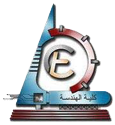Reflective cracking poses a significant challenge to the performance and durability of Hot-Mix Asphalt (HMA) overlays, particularly when applied over deteriorated Joint Plain Concrete (JPC) pavements. This study explores the effects of reflective cracking on overlay pavements through Finite Element Analysis (FEA) using ABAQUS, integrating the Cohesive Zone Model (CZM) to simulate crack initiation and propagation. Key factors analysed include overlay thickness, modulus of elasticity, JPC joint width, and fracture areas within the pavement structure. The results indicate that increasing overlay thickness from 30 mm to 100 mm reduces tensile strain by up to 68.8%, significantly improving stress dissipation. Variations in the modulus of elasticity (ranging from 1500 Mpa to 6000 Mpa) were found to reduce tensile strain by approximately 37.5%. Additionally, the number of load repetitions required to cause reflective cracking increases with overlay thickness: 11,220 repetitions for 30 mm, 226,458 repetitions for 60 mm, and 458,835 repetitions for 100 mm. Wider JPC joints (from 6 mm to 20 mm) increased stress concentrations and crack severity. The study also quantified fracture behavior using the Representative Fracture Area (RFA), with RFA increasing by up to 99% under higher load repetitions. These findings provide practical recommendations for pavement design, particularly in selecting optimal overlay thicknesses and material properties to extend the lifespan of rehabilitated pavements and mitigate reflective cracking.
المشارك في البحث
قسم البحث
تاريخ البحث
سنة البحث
2025
مجلة البحث
JES. Journal of Engineering Sciences
الناشر
Assiut University, Faculty of Engineering
عدد البحث
53 (1)
تصنيف البحث
International Journal
صفحات البحث
23-37
موقع البحث
https://jesaun.journals.ekb.eg/article_397290_93cd6aa8384f1d2eb612a91b6f8e245b.pdf
ملخص البحث
Research Rank
International Journal

